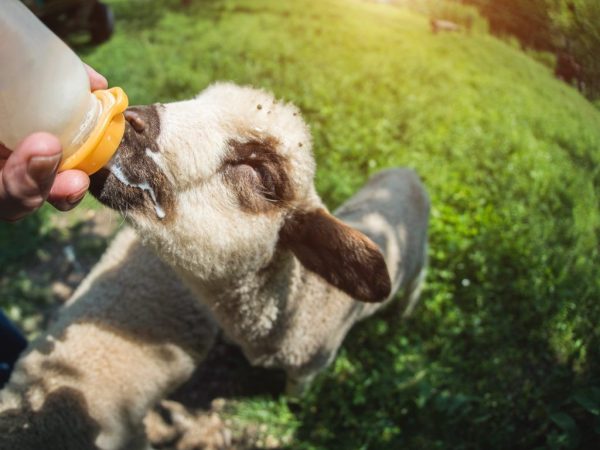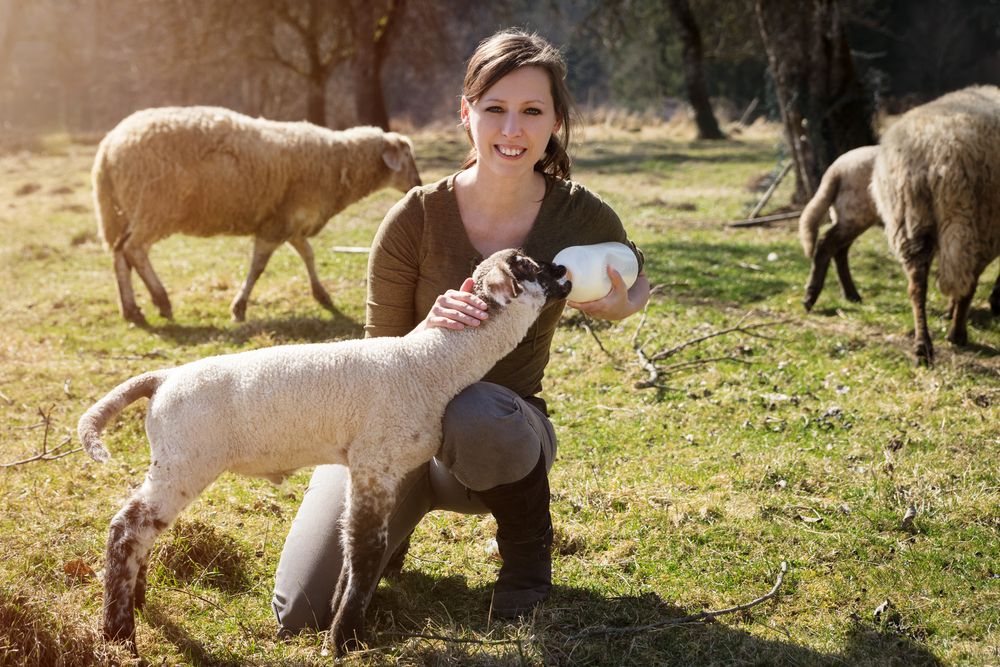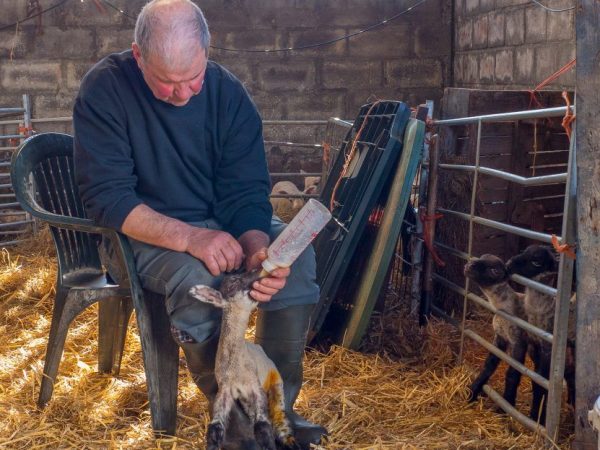How to feed a lamb yourself
The first 3 months are the most important in the life of a lamb, since during this period he receives all the useful and necessary substances with his mother's milk, only then he tries to eat on his own. There are situations when for some reason this does not happen, it usually happens when the mother dies during childbirth or 3-4 babies are born, then the mother cannot raise everyone. Not all farmers know what to do in such a situation and how to feed the lamb.

How to feed a lamb
The main rules of feeding
Raising lambs is not easy, but it is also not difficult. The first time, of course, will be difficult, it is not clear what and how to do, how to hold, how and how much to give food. But, as farmers say, in just a couple of days it will become commonplace. Mother's colostrum for the lamb is a very important component for good development, it is with the help of positive substances in mother's milk that the lamb gains strength for its growth.
First of all, if the animal is without a mother, it is necessary to create comfortable and correct conditions for the life of the lamb. Where the baby will live should be perfectly clean and dry.
The newly born lambs have very weak immunity, therefore, if they become infected with something, the immunity will not be able to resist - the cubs will die. The room should be warm enough, the most ideal temperature for a calf is 19 ° C.
Before feeding, absolutely all dishes: a bottle, a pacifier - must be sterilized, since even the most minimal and practically non-dangerous bacteria can lead to the death of a baby. You need to feed only according to the regimen. It cannot be broken in any way even for half an hour, since this is very important for the development and strength of the future sheep.

Lamb nutrition should be according to the regimen
If there is a sheep on the farm that feeds its young during the same period, it is best to try to add an orphaned lamb to it. The replanting must be carried out correctly, otherwise the sheep will refuse to feed. All animals can immediately recognize by their smell, whether they are a baby or not. That is why the lamb must be very carefully lubricated with the mother's amniotic fluid or her milk, and only then try to plant it. Otherwise, you will have to independently feed the orphan from the bottle until she can drink from any container on her own.
What to feed and in what quantities
Cubs can be given the following substitutes:
- cow's milk;
- goat;
- from another sheep.
Although they drink their mother's raw milk, they should only be bottle fed boiled. And the nipple with the bottle must always be sterilized so that there are no bacteria. Of course, boiled milk contains small amounts of vitamins, but the baby will avoid diarrhea, like from fresh milk. To make it convenient for the baby to drink, the bottle itself must be kept slightly below head level.
The amount of food should be strictly regulated. If the lamb is given more milk and overeats, it can cause his stomach to stop.The first 7 days of a lamb's life are very important, since during this period it is decided whether the baby will live or not. In the first week of life, no more than 145 g should be given per 1 feeding.
In the second week of life, approximately 200 g should be given, but not more. On the third and fourth, you can increase the dose to 380 g per 1 meal. According to experts, one lamb drinks more than 20 liters of milk per 1 month of life. The intervals between meals should not be long, on average - 2-2.5 hours, but no more! You need to feed 6-7 times a day. In addition, experiments have shown that in the very first week of life, babies need additional fats, which are usually found in mother's colostrum. Instead, different additives are used for hand feeding.

Lamb feeding amount
Today there are many specialty substitutes that are calculated per gram of fat. They only need to be purchased from veterinary pharmacies. The principle of their use is the same for everyone: it is necessary to completely dissolve the substitute in hot water, and it will look like a mixture for children. If in the first week the lamb needs to be fed 6-7 times a day, then for the second meal it can be reduced to 5, and already in the third and fourth - up to 4 times a day. Only in the seventh week of life can you try to transfer the baby to three meals a day.
You can try to transfer the baby to food from a bowl as early as 12-13 days after birth. To teach, you need to put a shallow bowl in front of him, moisten your finger and bring it to the cub. Gradually, the baby will begin to wonder what is in the bowl and how it is. After you are sure that the baby is used to eating in bowls, you can deliberately break the diet a little and delay the meal for half an hour, maximum for an hour. This is necessary so that the lamb has time to get hungry and gets even more used to eating from the bowl. It is best to place the container with milk on a stable surface for easy drinking.
Feeding by week
Experts recommend that already in the third week of a baby's life try to give him roots, but very carefully. They need to be crumbled into rather small cubes so that the animal can digest them. Due to the fact that the lamb's stomach is still weak, it may not cope with such heavy food.
Some farmers give crimped grain in the form of an additive, but the volume of such an additive should be no more than 30 g. Over time, you can gradually increase the portions of such an additive, while looking at the condition of the animal, how it reacts to this, it is especially important to carefully monitor the stool.
After 28 days, it is allowed to raise the dosage to 50 g and add 10 g each day. After one month, the body needs proteins, calcium, which is why at this moment it is necessary to start adding bone meal, salt and chalk to the animal's food.
The beneficial substances listed above have a good effect on the formation and strengthening of the bone structure, and also help to better assimilate and digest food. The total weight of such minerals should be no more than 5 g.
Reasons why a mother cannot feed a lamb
The most common cause is the death of the mother. Unfortunately, this happens quite often, due to the fact that sheep often give birth, their immunity does not have time to get stronger. Also, a sheep can die due to old age: an elderly body cannot withstand physical and emotional stress.
The second reason is the rejection of the sheep from their newborn children. This behavior is influenced by many different factors. Usually a sheep gives birth to 1 lamb, but there are 2 or 3, and this is a great stress for the sheep, because she refuses to feed them.
The third reason is sheep disease. Sometimes, due to illness, she simply does not have milk.
And the last reason is the numerous offspring. A sheep cannot physically feed everyone, so it chooses the strongest, and often throws the weak out of its territory.
The health and condition of the lambs will depend only on what conditions the owner has created for them.The key is to keep an eye on what you eat, not skip meals, sterilize every item, and keep the lamb warm. Also, so that the mother does not abandon her cubs, one should take them less in her arms, and it is better not to touch either the children or the mother for the first month, it is forbidden to transfer or change their place of residence: due to stress, the sheep may lose milk.


